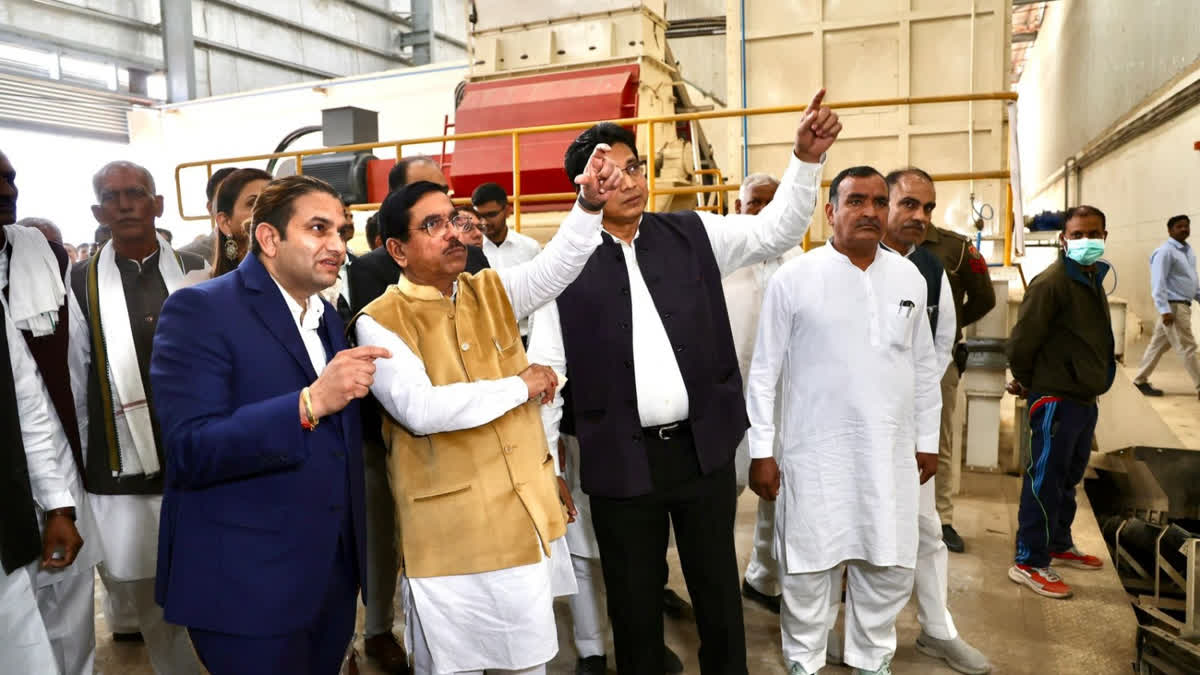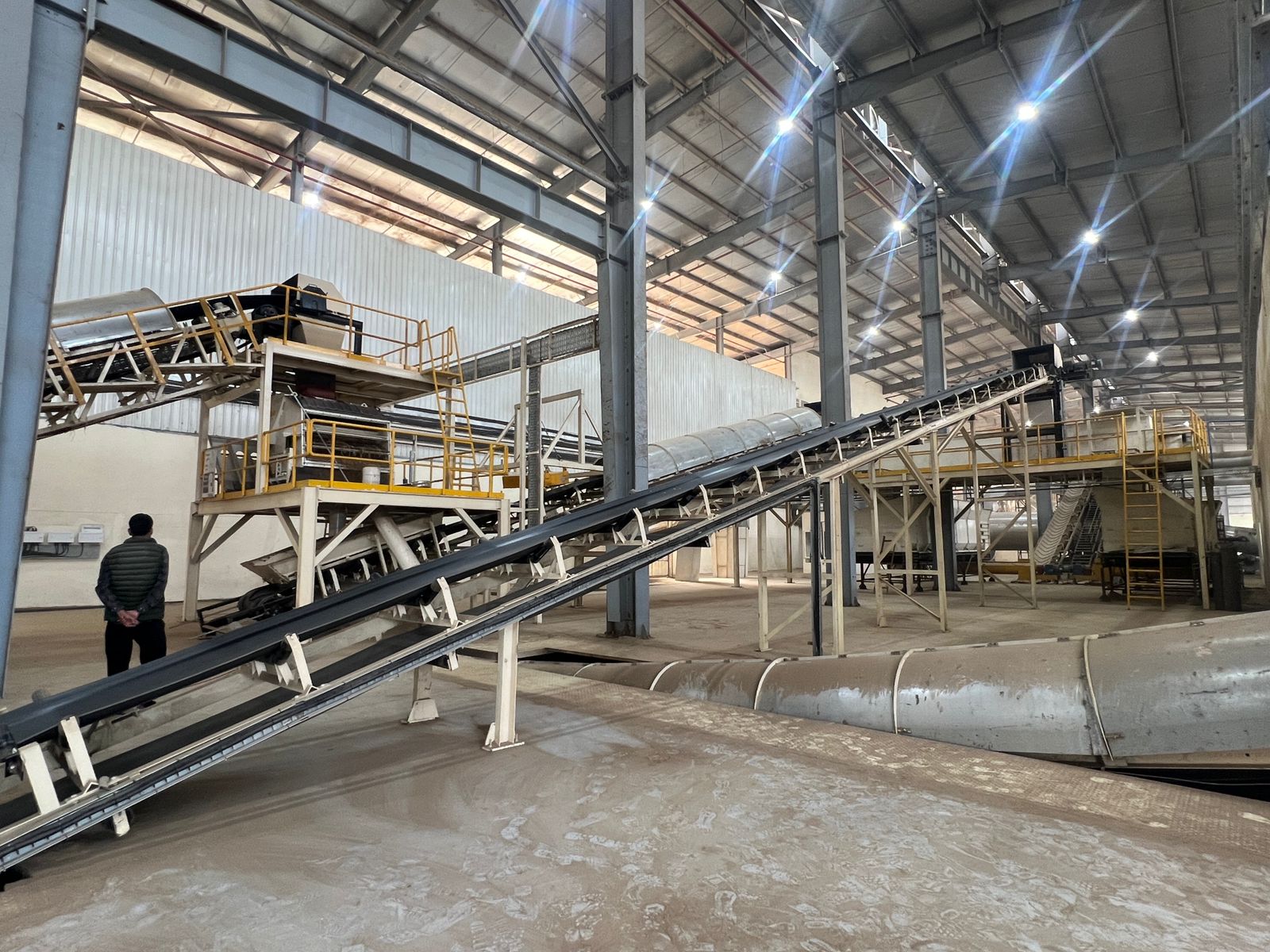Haryana has taken a major step towards clean energy with the launch of a new bio-energy hub in Rewari. This project aims to tackle the problem of stubble burning by turning agricultural waste into a profitable resource for farmers, while also supporting India’s transition to renewable energy.

The bio-energy ecosystem, inaugurated by Union Minister for New and Renewable Energy, Pralhad Joshi, includes multiple facilities that turn crop residue into valuable products like ethanol and biomass pellets. The hub is designed to help meet India’s goals for ethanol blending and its 2070 net-zero target, while also providing farmers with an alternative to burning their crop stubble.
What’s Inside the Bio-Energy Hub?
The integrated facility, developed by the K2 Group, spans across Rewari and Jhajjar, and consists of four main units:
-
Ethanol Plant: A 150 KLPD (kiloliters per day) grain-based ethanol plant. This facility will produce ethanol, which will help meet the country’s E20 blending target and reduce dependence on imported fossil fuels. It also has a zero-liquid-discharge system, ensuring no wastewater is wasted.
-
Feed Pellet Plant: The by-product of the ethanol production process, known as Distillers Dried Grains with Solubles (DDGS), is turned into high-protein feed for cattle and poultry. This provides affordable feed for farmers and reduces waste.
-
Biomass Pellet Plant: A 10.5 TPH (tons per hour) plant that converts paddy straw and mustard stalks into biomass pellets. These pellets can replace coal in thermal power plants, helping reduce pollution. The plant has already secured significant demand, with over 100,000 metric tonnes committed by power producers.
-
Biomass Gasifier: A 2 MW biomass gasifier plant generates clean electricity using locally sourced mustard briquettes, further reducing the carbon footprint of the hub.
Benefits for Farmers

For farmers, the project offers a much-needed solution to the annual challenge of stubble burning. With long-term buy-back contracts in place, the operator will purchase mustard stalks at ₹3,250–₹3,500 per metric tonne, ensuring farmers have a reliable market for their crop residue. This offers several advantages:
-
Steady income: Farmers can earn from crop residue throughout the year.
-
Lower costs: The cost of stubble management is reduced since farmers now have a market for their waste.
-
New job opportunities: Rural transport, storage, and handling of agricultural waste will create additional employment.
The project has already created 300-400 direct jobs, with the potential to generate over 1,500 indirect jobs, many of which will be skilled technical roles for rural youth.
Environmental Impact: Cleaner Air and Reduced Emissions
The bio-energy hub addresses the major environmental issue of air pollution caused by stubble burning in northern India. By using wheat and mustard residue for biomass pellets and ethanol production, the facility is expected to reduce over 100,000 metric tonnes of CO₂ emissions each year. The biomass pellets will replace coal in thermal power plants, and the ethanol will help lower emissions from vehicles.
Additionally, the hub includes renewable energy sources like a 2.5 MW rooftop solar system, which further reduces its carbon footprint.
A Model for Rural Industrialization
This project is a model for rural industrialization, where agricultural waste is transformed into valuable resources, creating jobs and supporting economic growth. By combining ethanol production, pelletization, feed manufacturing, and biomass power generation, the hub offers a vision for a sustainable future in rural India:
-
Monetizing crop residue: Turning waste into valuable products.
-
Creating local jobs: Offering industrial employment to rural youth.
-
Reducing emissions: Helping thermal power plants meet clean-energy mandates.
-
Supporting farmers: Offering farmers new ways to earn income without changing their cropping patterns.
Government Support and Future Prospects
Minister Pralhad Joshi highlighted the government’s role in making this transformation possible, with financing support through IREDA (Indian Renewable Energy Development Agency), which provided up to 85% of the funding for the ethanol unit and plant machinery.
This project aligns with several national initiatives, including the National Biofuel Policy, the MNRE Biomass Programme, and India’s COP26 commitment to achieve net-zero emissions by 2070.
Conclusion
The Rewari bio-energy hub is a significant step toward addressing both India’s energy and environmental challenges. It offers a win-win solution: farmers benefit from new income streams and lower costs, while the country moves toward cleaner energy and reduced emissions. As this model proves successful, it could be replicated in other regions, contributing to a cleaner, more sustainable future for rural India.





